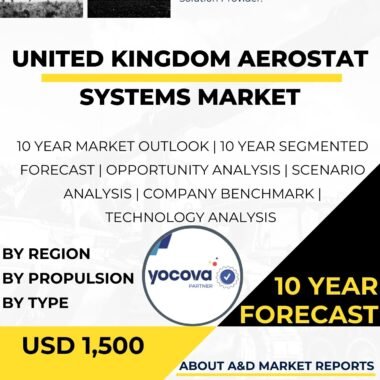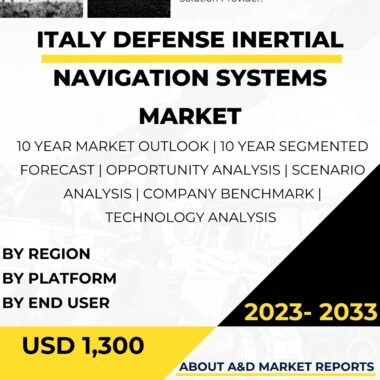Description
UK Defense Inertial Navigation Systems Market
Introduction to the UK Defense Inertial Navigation Systems Market
The UK defense inertial navigation systems market is an essential part of the country’s military strength. These systems provide precise and continuous data on position, velocity, and attitude for defense platforms. They support aircraft, naval vessels, submarines, and ground equipment. The UK invests heavily in INS technologies to ensure accuracy and reliability in military operations.
How Inertial Navigation Systems Work
Inertial navigation systems operate using the principles of motion and rotation. They combine sensors like accelerometers and gyroscopes to track movement in three-dimensional space. The system offers autonomous navigation, even when external signals such as GPS are unavailable or jammed. This makes INS highly valuable in contested or restricted environments.
Aviation Applications in the UK Defense Inertial Navigation Systems Market
Aviation is one of the largest sectors using these systems. Military aircraft depend on INS for stable and continuous navigation. The systems support missions where GPS may be disrupted or limited. They provide accurate updates on the aircraft’s position and attitude, enabling effective flight control and target engagement. Strapdown INS and hybrid GPS-INS systems are becoming widely adopted due to their accuracy and compact design.
Naval Applications in the UK Defense Inertial Navigation Systems Market
Naval vessels also rely heavily on inertial navigation systems. These systems support surface ships and submarines during complex maritime missions. In littoral waters and underwater operations, INS ensures continuous positioning without relying on external signals. The technology enhances mission planning, safety, and overall performance.
INS Integration in Unmanned Defense Platforms
Unmanned Aerial Vehicles (UAVs) and Unmanned Underwater Vehicles (UUVs) use INS for autonomous operations. These platforms carry out surveillance, reconnaissance, and intelligence tasks. Their performance depends on consistent and reliable navigation. INS improves control accuracy and supports mission execution even in harsh environments.
Role of INS in Precision-Guided Munitions
Inertial navigation systems are critical in modern guided weapons. Missiles and smart bombs use INS to stay on course and reach their targets with high precision. They function accurately even in challenging environmental conditions. This reduces the need for external guidance and increases weapon effectiveness.
Ground-Based Defense Equipment and INS Technology
Land vehicles and artillery systems also benefit from inertial navigation systems. INS helps maintain accurate positioning and targeting during movement. It supports quick response and consistent performance on dynamic battlefields. Ground forces rely on this technology for fire control and tactical operations.
Technological Advancements in the UK Defense Inertial Navigation Systems Market
The market continues to evolve through continuous innovation. Sensor technologies, including MEMS and fiber-optic gyroscopes, offer improved accuracy and durability. Better signal processing and data fusion techniques reduce drift and enhance system stability. These developments strengthen the reliability of INS across defense applications.
Challenges in the UK Defense Inertial Navigation Systems Market
Despite advancements, INS still faces several challenges. Sensor drift remains a concern during long missions and must be corrected with external references when possible. Environmental factors like vibration, temperature, and electromagnetic interference can affect system accuracy. Proper calibration and robust design are essential to overcoming these issues.
Conclusion
The UK defense inertial navigation systems market plays a vital role in military operations. These systems support aviation, naval forces, unmanned platforms, guided munitions, and ground equipment. Continuous research and technological improvements are necessary to enhance accuracy and reduce drift. Advancing INS capabilities ensures the UK maintains strong and reliable defense performance.




